What is Deep Learning?
Deep learning (commonly called "học sâu" in Vietnamese) is a machine learning method and a branch of artificial intelligence (AI). This approach uses multi-layer artificial neural networks (deep neural networks) to simulate complex decision-making abilities similar to the human brain, enabling computers to effectively recognize hidden patterns in data.
Deep learning is a machine learning method and a branch of artificial intelligence (AI). This approach uses multi-layer artificial neural networks (deep neural networks) to simulate complex decision-making abilities similar to the human brain, enabling computers to effectively recognize hidden patterns in data.
In fact, most modern AI applications around us are powered by a form of deep learning technology, from voice and image recognition to recommendation systems and intelligent chatbots.
- 1. How Does Deep Learning Work?
- 2. Deep Learning vs. Machine Learning
- 3. Applications of Deep Learning
- 4. Advantages of Deep Learning
- 5. Limitations of Deep Learning
- 5.1. Requires Very Large Datasets
- 5.2. Data Requirements:
- 5.3. High Computational Demands
- 5.4. Resource Requirements:
- 5.5. "Black Box" Models - Hard to Interpret
- 5.6. Challenges in Critical Domains:
- 5.7. Risk of Bias from Training Data
- 5.8. Common Bias Sources:
- 5.9. Mitigation Strategies:
- 5.10. Requires High Expertise to Develop
- 5.11. Required Expertise:
- 6. Conclusion
How Does Deep Learning Work?
Deep learning operates based on a multi-layer artificial neural network model. The neural network consists of an input layer, multiple hidden layers in between, and an output layer. Raw data (such as images, audio, text) is fed into the input layer, then passed through each hidden layer where the network gradually extracts features at increasingly abstract levels, and finally produces a prediction at the output layer.
Forward Propagation
Raw data flows through input layer → hidden layers → output layer, producing predictions
Error Calculation
Model compares predictions with actual labels to calculate error
Backpropagation
Error propagates backward, adjusting weights to reduce error in next iteration
Feature Learning Example: Facial Recognition
First Layer
Middle Layers
Deep Layers
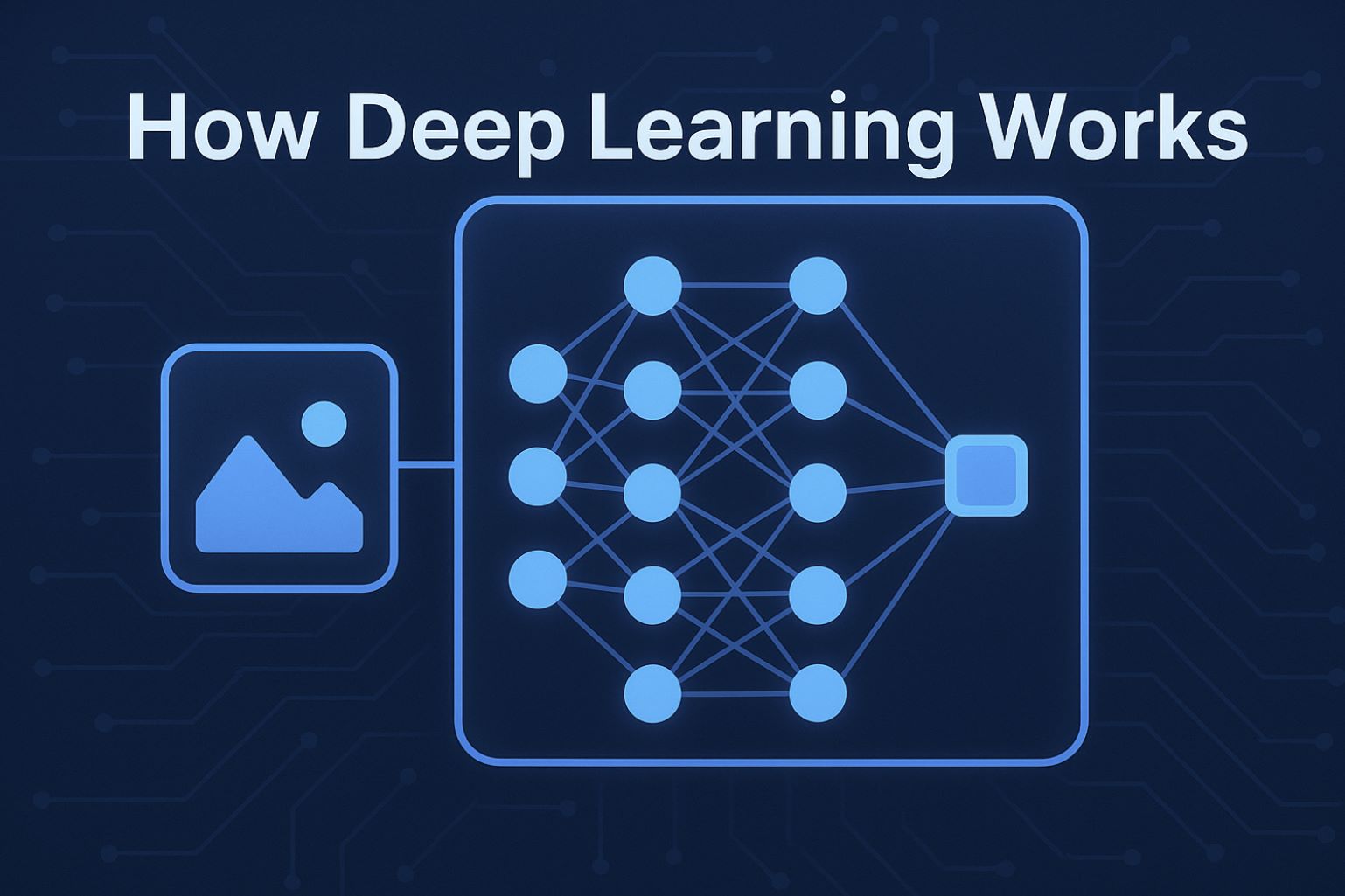
Deep Learning vs. Machine Learning
Although deep learning is essentially a method within machine learning, it has several important differences compared to traditional machine learning techniques:
Shallow Learning
- 1-2 hidden layers or non-neural algorithms
- Manual feature engineering required
- Relies heavily on labeled data (supervised learning)
- Works well with smaller datasets
Deep Neural Networks
- 3+ hidden layers (often dozens or hundreds)
- Automatic feature extraction from raw data
- Can learn from unlabeled data (unsupervised learning)
- Excels with massive datasets
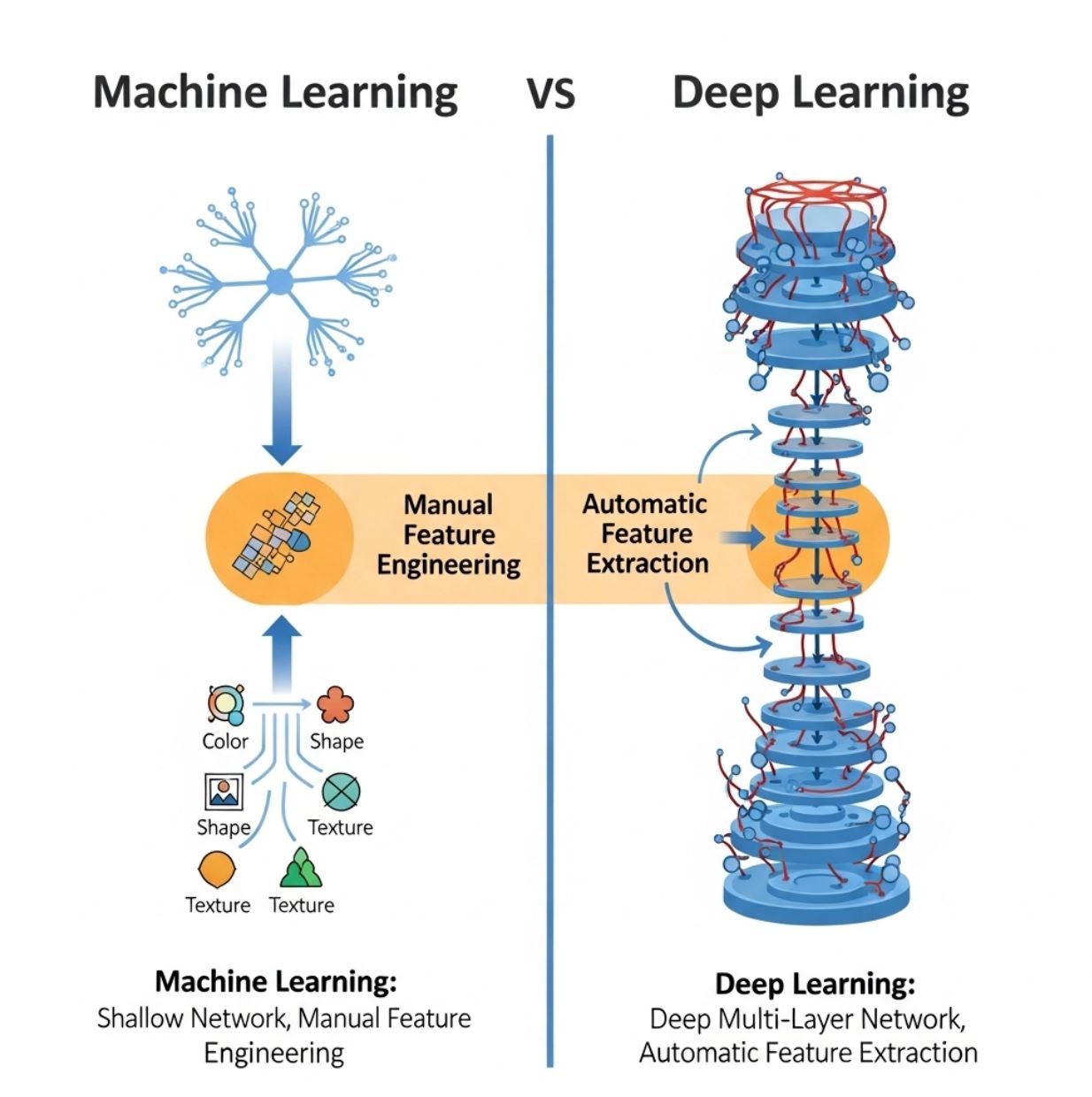
Applications of Deep Learning
Deep learning has revolutionized many fields with its superior ability to analyze complex data. Below are key areas where this technology is strongly applied:
Computer Vision
Deep learning helps computers "see" and understand the content of images and videos. Convolutional neural networks (CNNs) can classify images, detect objects, recognize faces, and more with high accuracy.
Real-World Applications:
- Self-Driving Cars: Recognizing lanes, pedestrians, traffic signs to assist safe autonomous driving
- Healthcare: Analyzing X-rays, MRIs to detect tumors and lesions with high accuracy
- Social Networks: Face recognition in photos to suggest friend tags automatically
- Agriculture: Monitoring crop health via satellite and drone imagery
- Security: Intrusion detection and surveillance via camera systems
Speech Recognition
This technology enables computers to understand human speech. Thanks to deep learning, virtual assistants can recognize voices with various accents and languages, converting speech to text or executing corresponding commands.
Popular Examples:
Amazon Alexa
Google Assistant
Apple Siri
Additional Applications:
- Automatic video captioning and subtitles
- Customer call center analysis and support
- Speech-to-text conversion in healthcare and legal fields
- Real-time translation services
Natural Language Processing (NLP)
Deep learning helps computers understand and generate human written language. This breakthrough enables machines to process text with human-like comprehension.
Machine Translation
Automatically translates text between languages with high accuracy
- Google Translate
- DeepL Translator
- Real-time conversation translation
Chatbots & Virtual Assistants
Responds to messages and provides customer support naturally
- 24/7 customer service
- Automated support tickets
- Conversational AI interfaces
Text Summarization
Automatically summarizes long documents into key points
- News article summaries
- Research paper abstracts
- Meeting notes generation
Sentiment Analysis
Classifies text emotions and opinions
- Social media monitoring
- Product review analysis
- Brand reputation tracking
Recommendation Systems
Deep learning is used to recommend relevant content and products to individual users based on their behavior and preferences, creating personalized experiences.
Netflix
YouTube
Amazon
Generative AI
This group of AI applications creates new content (text, images, audio, video) based on learning from existing data. Deep learning has paved the way for revolutionary generative models.
Key Technologies:
Image Generation
Creates original images from text descriptions
- DALL-E: Text-to-image generation
- Midjourney: Artistic image creation
- Stable Diffusion: Open-source image synthesis
Text Generation
Produces natural, human-like text and conversations
- ChatGPT: Conversational AI assistant
- GPT-4: Advanced language model
- Claude: AI writing assistant
Practical Applications:
- Marketing content creation and copywriting
- Automatic code generation and debugging
- Customer support automation
- Creative design and art generation
- Music and audio composition
- Video synthesis and editing
Generative AI represents one of the most significant technological breakthroughs in recent years, with the potential to transform how we create, communicate, and solve problems across virtually every industry.
— Sam Altman, CEO of OpenAI
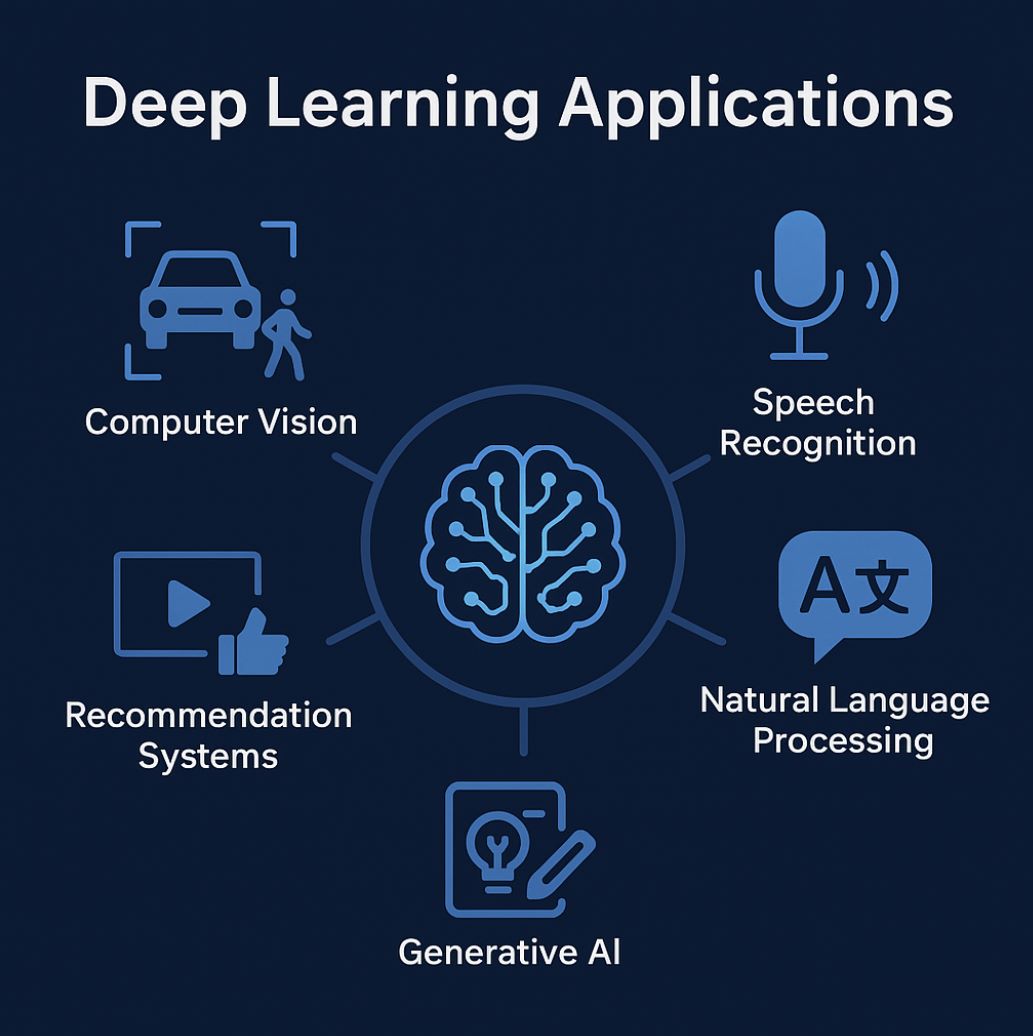
Advantages of Deep Learning
Deep learning has become popular due to the following outstanding advantages:
Automatic Feature Learning
Deep learning models can automatically extract suitable features from raw data, minimizing manual preprocessing effort.
- No manual feature engineering required
- Networks learn best data representations
- Especially effective for unstructured data (images, audio, text)
- Reduces dependency on domain expertise for data preparation
Superior Accuracy
Multi-layer architectures and large-scale learning enable exceptional performance across complex tasks.
- Often surpasses traditional methods significantly
- Achieves human-level or better performance in many domains
- Enables reliable automation of complex tasks
- Continuous improvement with more data
Versatile Applications
Deep learning is highly flexible and applicable to diverse data types and problem domains.
- Works across vision, language, speech, and more
- Drives automation in multiple industries
- Performs tasks previously requiring human intelligence
- Supports incremental learning with new data
Big Data Mastery
Deep learning excels with massive datasets, discovering patterns invisible to traditional methods.
- Performance improves with more data
- Discovers complex patterns in large-scale data
- Less prone to overfitting than shallow models
- Leverages modern big data infrastructure effectively
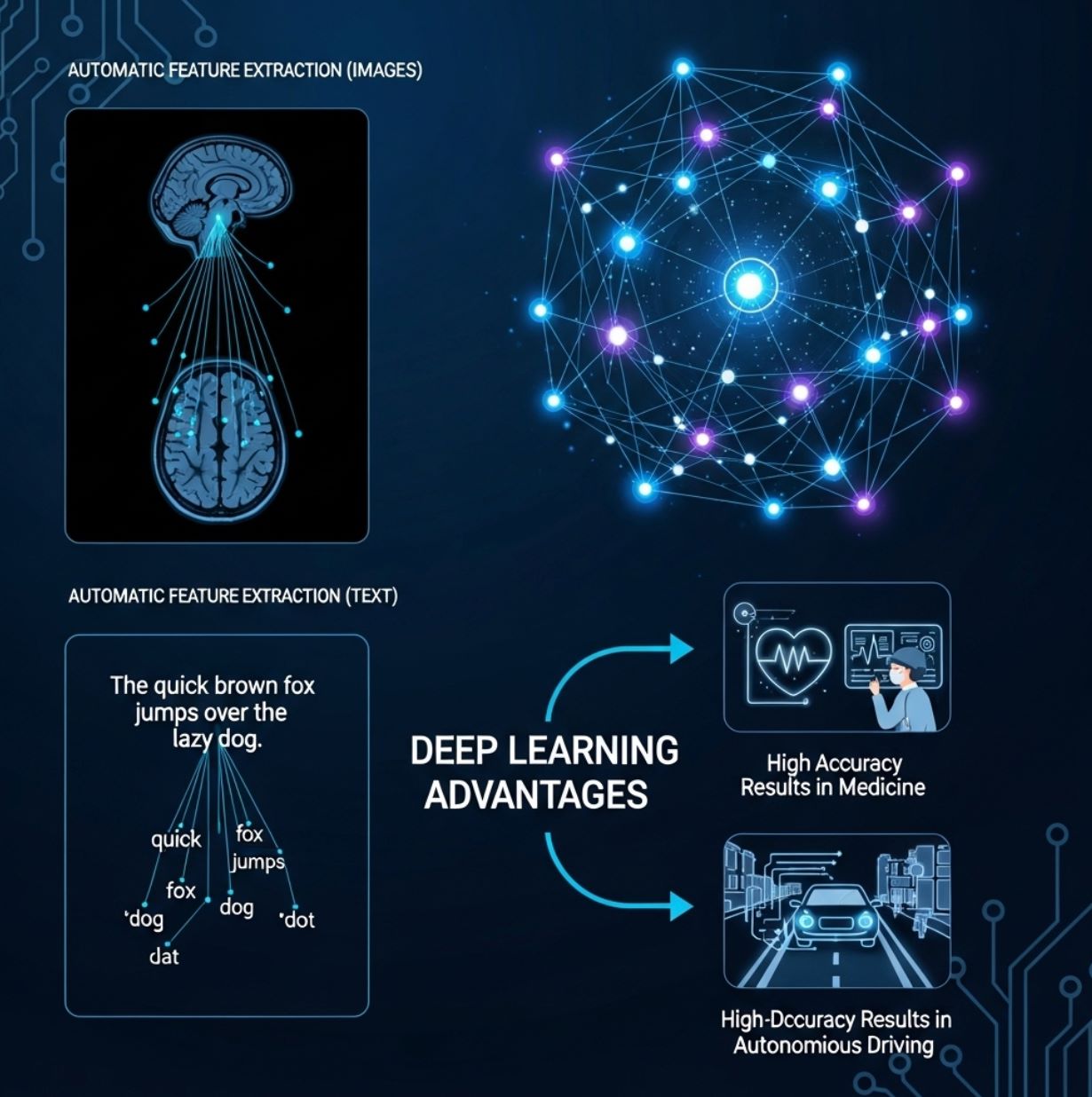
Limitations of Deep Learning
Alongside its advantages, deep learning also has some challenges and limitations to consider:
Requires Very Large Datasets
Deep learning models contain many parameters and usually need extremely large training datasets to be effective.
Data Requirements:
- Accurate and high-quality labeled data
- Sufficient quantity (often millions of examples)
- Diverse and representative samples
- Minimal bias and errors
Impact: Organizations without access to large datasets may struggle to implement deep learning effectively, creating barriers to entry for smaller companies and research teams.
High Computational Demands
Training deep learning networks is very resource-intensive, requiring powerful hardware and significant energy consumption.
Resource Requirements:
Hardware
Time
Cost
"Black Box" Models - Hard to Interpret
A major limitation of deep learning is its lack of interpretability. Due to complex network structures and abstract feature learning, they are often described as "black boxes" – making it difficult for humans to understand why a model made a specific decision.
Challenges in Critical Domains:
- Healthcare: Doctors need to understand diagnostic reasoning
- Finance: Regulators require explainable credit decisions
- Legal: Court systems demand transparent evidence
- User Trust: Customers want to understand automated decisions
The lack of interpretability in deep learning models poses significant challenges for adoption in regulated industries where explainability is not just desired but legally required.
— Cynthia Rudin, Professor of Computer Science, Duke University
Risk of Bias from Training Data
Deep learning models learn entirely from data, so if training data contains bias or is unrepresentative, models will learn and amplify those biases.
Common Bias Sources:
Demographic Bias
Historical Bias
Selection Bias
Label Bias
Mitigation Strategies:
- Prepare diverse, balanced datasets
- Audit training data for bias
- Use fairness metrics during evaluation
- Implement bias detection and correction techniques
- Ensure diverse teams in model development
Requires High Expertise to Develop
Building and optimizing deep learning models is complex and not straightforward. It requires experts with deep knowledge of machine learning, mathematics, and practical experience.
Required Expertise:
Technical Knowledge
- Deep understanding of neural network architectures
- Strong mathematical foundation (linear algebra, calculus, statistics)
- Programming skills (Python, TensorFlow, PyTorch)
- Knowledge of optimization algorithms
Practical Skills
- Hyperparameter tuning experience
- Handling overfitting and underfitting
- Debugging complex model behaviors
- Managing vanishing/exploding gradients
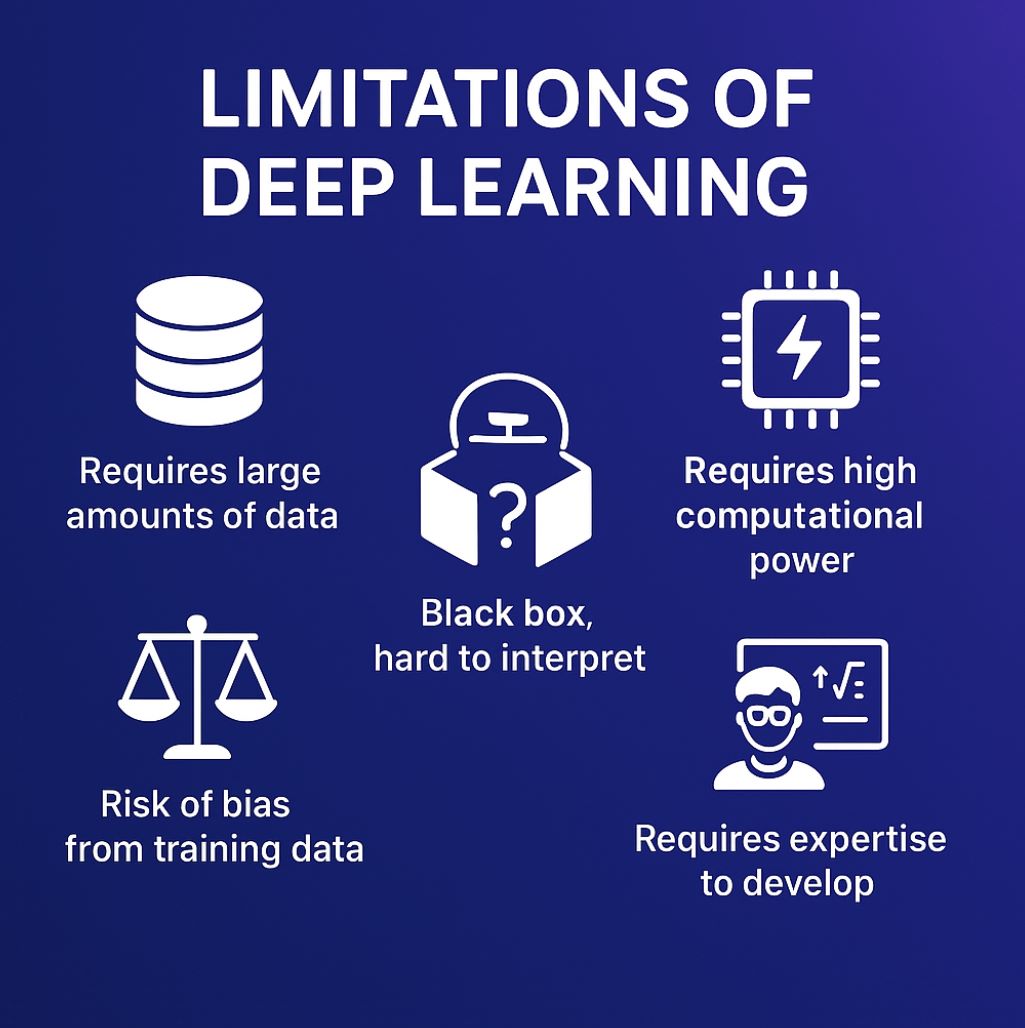
Conclusion
Deep learning has established itself as a core component in the current AI revolution. Thanks to its ability to learn from large data and partially simulate brain functions, deep learning enables computers to make remarkable advances in perception and information processing.
Autonomous Vehicles
Medical Diagnosis
Natural Conversations
Despite challenges related to data, computation, and transparency, deep learning continues to improve. With advances in computing infrastructure and new techniques (such as Transformer architectures, reinforcement learning, etc.), deep learning is expected to progress further, unlocking breakthrough applications and remaining a key driver of artificial intelligence development in the future.




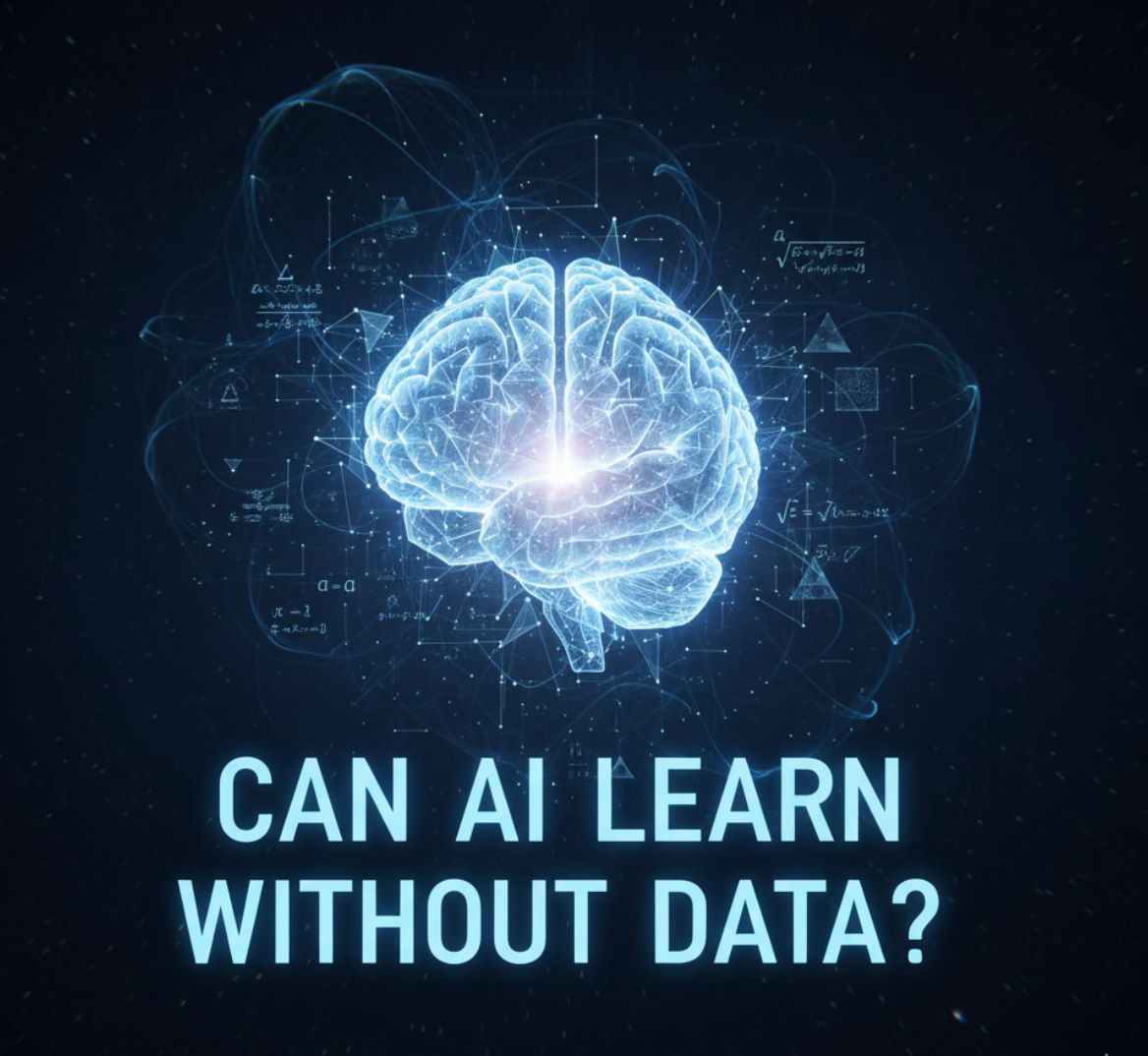
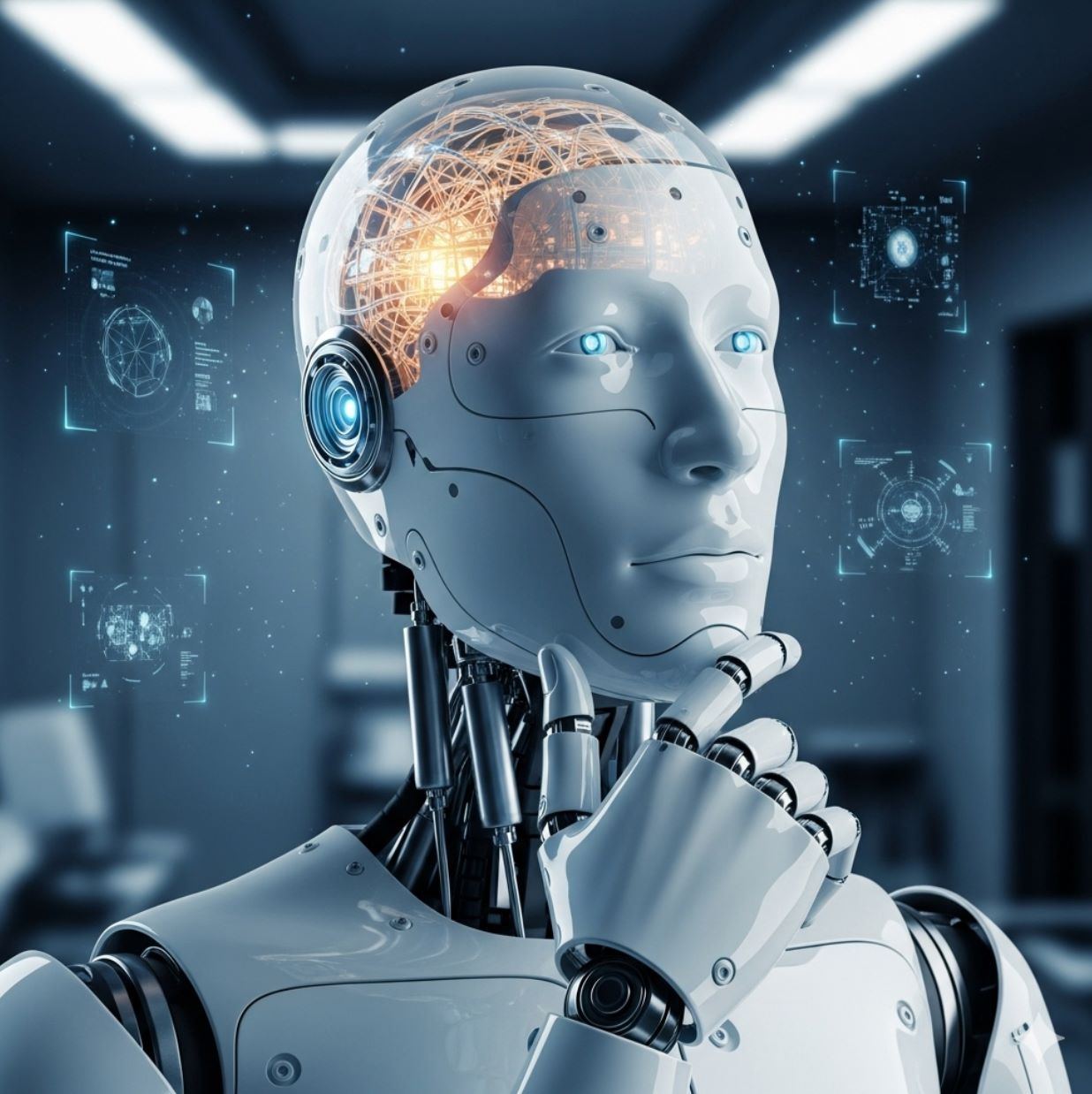
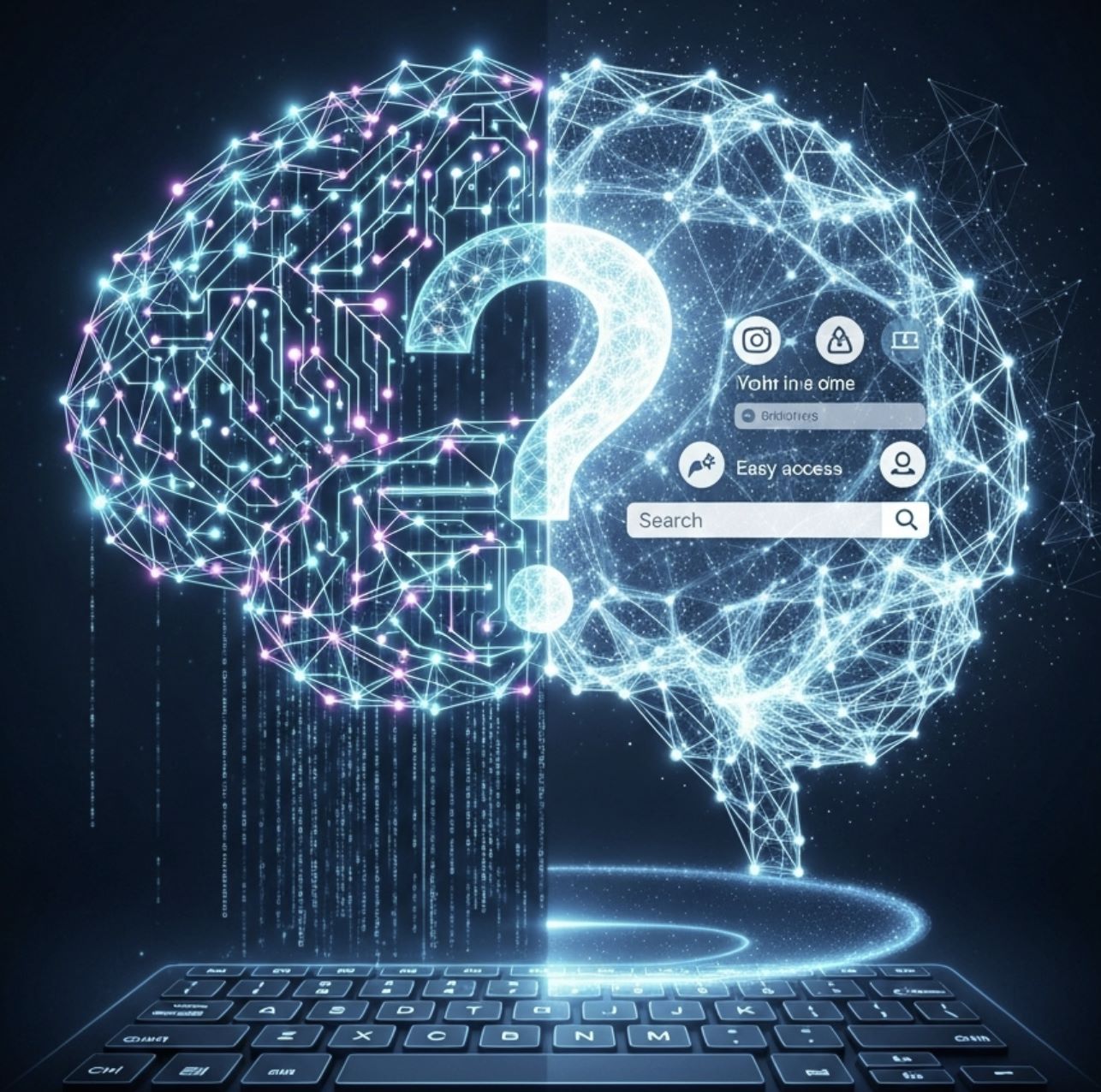
Comments 0
Leave a Comment
No comments yet. Be the first to comment!